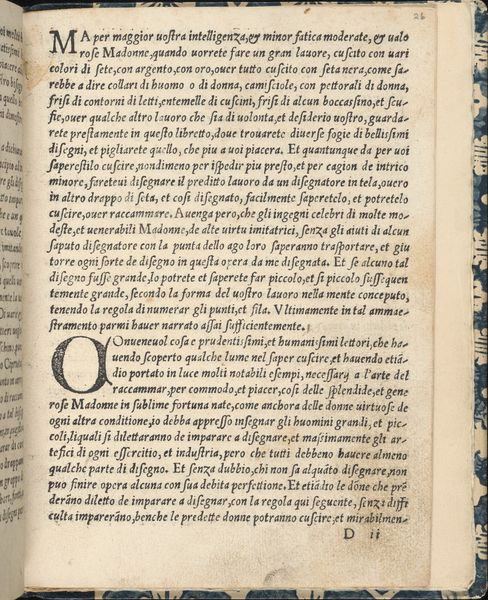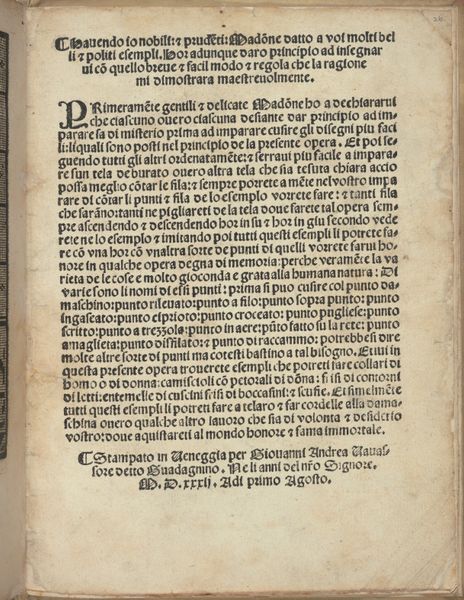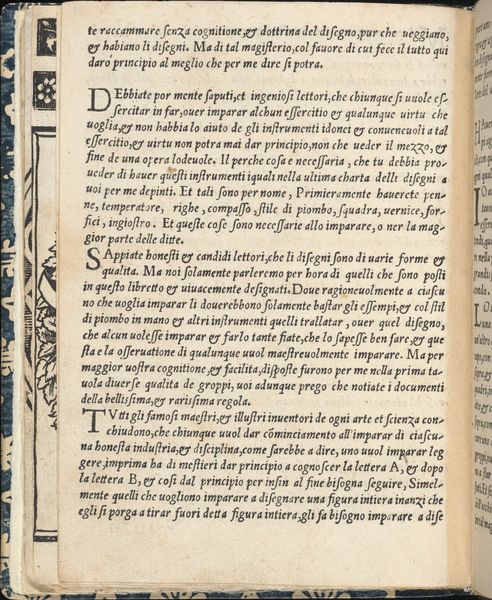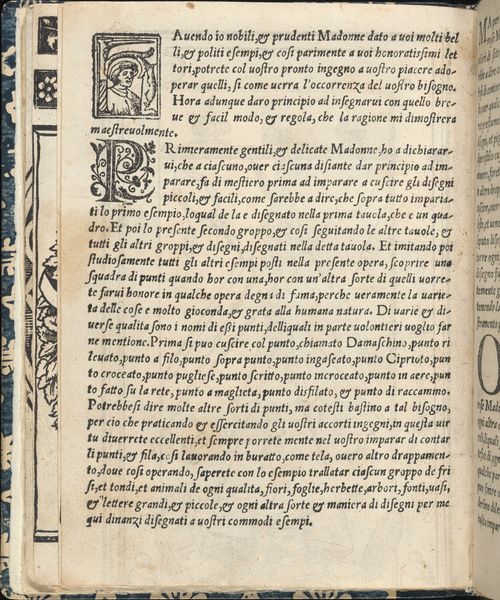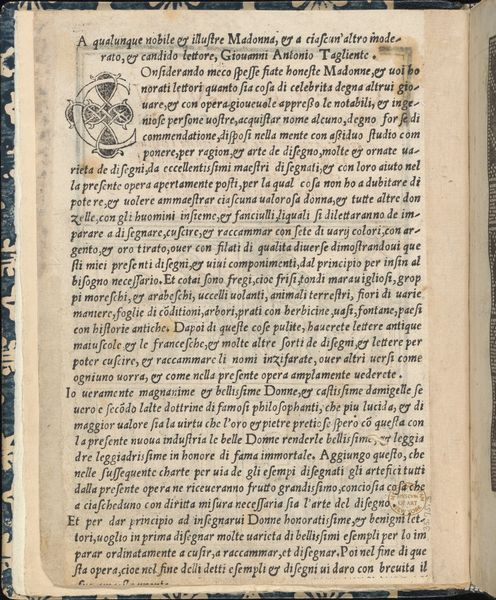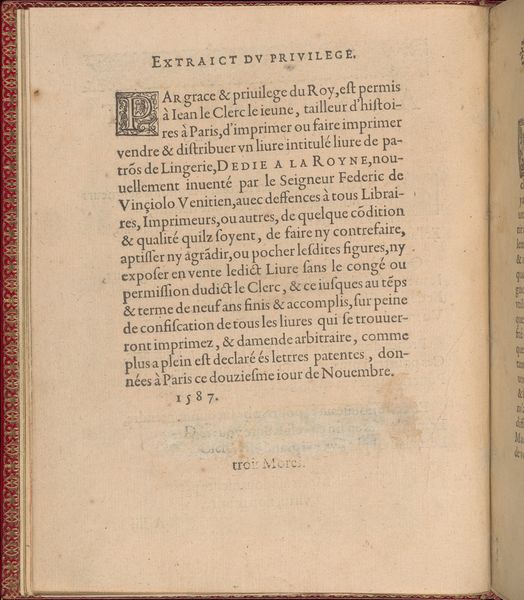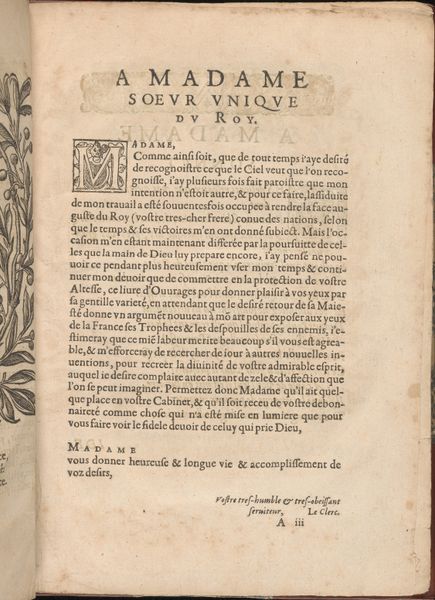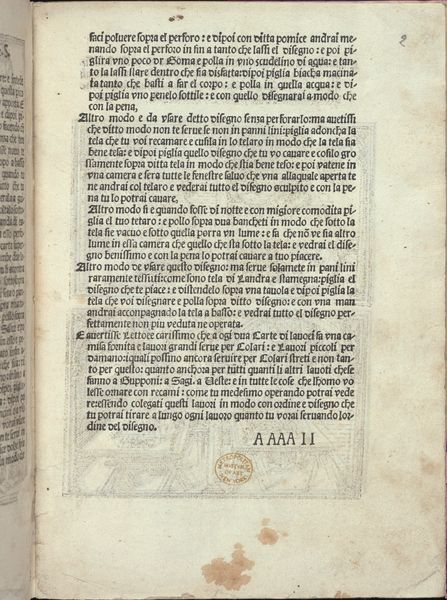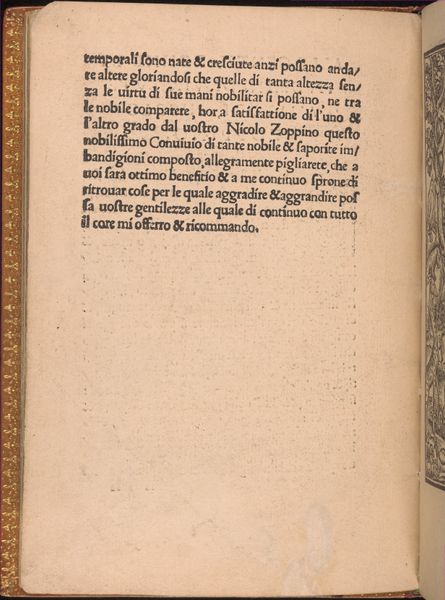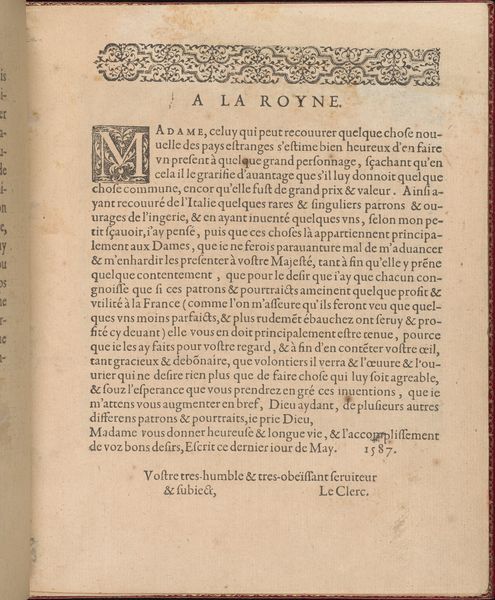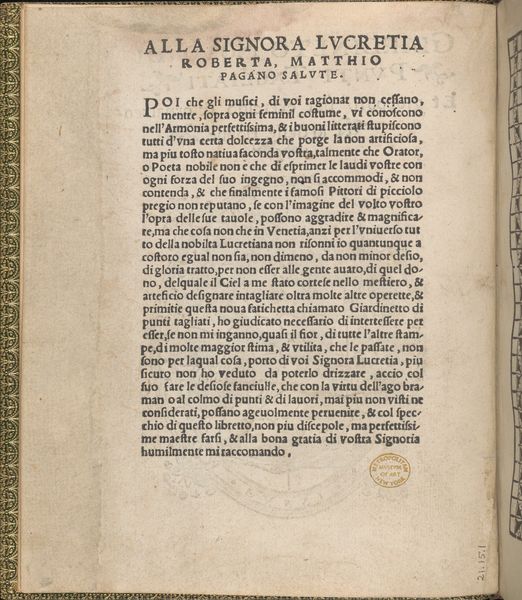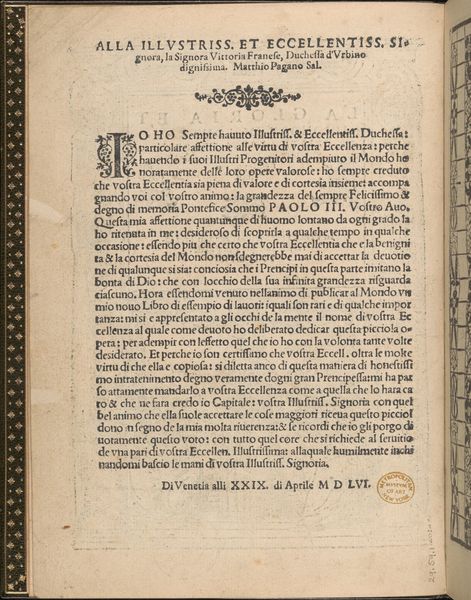
drawing, print, typography
#
drawing
# print
#
11_renaissance
#
typography
#
italian-renaissance
#
watercolor
Dimensions: Overall: 7 13/16 x 6 3/16 x 3/8 in. (19.8 x 15.7 x 1 cm)
Copyright: Public Domain
This is page 28 from *Essempio di recammi*, a book of embroidery patterns printed in Venice in 1530 by Giovanni Antonio Tagliente. Note the prominent use of text. In Renaissance emblem books, text and image worked together. Tagliente’s words here function as a kind of symbolic language themselves. Look how he emphasizes instruction, discipline, and the unveiling of hidden knowledge. This connects to the broader cultural symbolism of the printed word during the Renaissance. We see this in other forms of art. The motif of unveiling truth, often represented by female figures like *Veritas*, recurs throughout history. Consider how ancient Greek statues of draped figures later influenced Renaissance artists, who used drapery to conceal and reveal the human form. The Renaissance fascination with classical antiquity saw a revival of such symbols, often imbued with new, Christianized meanings. Such continuous, cyclical progression sees symbols resurface, evolve, and take on new meanings across time.
Comments
No comments
Be the first to comment and join the conversation on the ultimate creative platform.

